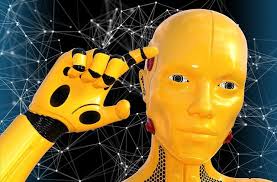Source: dqindia.com
Over the past few decades, technology-based innovations have added a new meaning to business conversations, thus changing the way we live and work in the digital age. With increased focus on improving business agility and performance, to sail through the challenging age of digital transformation, it is in the interest of modern businesses to leverage these cutting-edge technologies to maximize operational efficiencies and sustain profitability. The journey so far and how new technologies will impact key verticals in the coming years.
Emerging Tech Impact
The age of transformation will witness the emergence of varied possibilities and use-cases with the intermingling of new age technologies like Artificial Intelligence, IoT, automation and analytics. For example, smart cities, self-driving cars, healthcare, manufacturing and retail (automation, preventive maintenance, predictive analytics, R&D, realtime operations and supply chain management).
While Artificial Intelligence has many use cases, practically in every field, we would see that the best end-to-end application of Artificial Intelligence will happen in conjunction with automation. Be it intelligent automation, smart automation or cognitive automation, we are already seeing a blueprint of products and services that combine AI/ML, data models, orchestration and automation to address the end-to- end transformation journey of an enterprise.
The impact of automation in re-inventing work is profound for both business and IT users. Automation started its journey as a cost reduction tool using Robotic Desktop Automation, a human-triggered deterministic approach to process structured data with minimal context awareness and without any ability to learn. RPA expanded the data range to semi-structured data and started running through process orchestrations. Next, autonomics added context awareness to automation’s armory, but only limited to its computing environment.
The current state is a step beyond autonomics, where automation gains cognitive abilities with learning capability and a probabilistic processing approach. The inclusion of Artificial Intelligence has expanded the horizon of automation tools by enabling them to process unstructured data.
Even though most organisations today are only using natural language processing NLP as a cognitive tool, as the automation journey progresses towards true value amplification, there will be a need to deploy future automation tools with advanced AI capabilities like computer vision, speech recognition, etc. As enterprises start to consume the above levers, we will see more and more industry-specific use cases approach maturity. Automation bots can be called experts in their respective industries. They can extract data, query databases, process the data, match them against given criteria and enter data into system. The workflow, analytics and configuration are specifically tailored to suit the needs of the industry and offer a plug-and-play with minimal customizations.
How are new digital technologies changing the business landscape?
- Banking, financial services and insurance (BFSI) segment accounts for the largest revenue share and is expected to continue to grow. This segment is driven on automation of business tasks ranging from data entry, compliance regulations amongst others, resulting not only in enhanced speed and efficiency, but also comprehensive insights.
- Combination of light detection and ranging (LiDAR), edge computing and computer vision solution for automated factory floor monitoring. Factory maps are being used by autonomous mobile robots (AMRs) to dynamically navigate the mapped premises. Use cases have emerged that deploy computer vision ML techniques for object detection, classification, monitoring, path planning and besides other range of factory operations.
- An intelligent automation solution comprising of ML-driven text analytics and RPA components: It enables users to extract data from the huge corpus of legal documents for processing. It also allows functional and department-specific classification and tagging of meta data. Reinforcement learning to retrain the ML model, and eventually improving the accuracy. The final step is with a hand-off to RPA for effective and efficient contract management.
- Heat map generation using AI/ML: Wide variety of applicability of this use case across industries such as retail, transportation, public services (traffic monitoring), etc. There will be the known movement and concentration of people on real-time basis in a confined space. This helps with guiding the movement/ flow of people, efficient space utilisation, improving layout design, security and theft monitoring, traffic congestion management, etc. Adding an IoT component to this solution can further open arenas to build a robust smart city solution. Just like an expert golfer knows, which club to use, and the required power to push the ball to reach the hole, similarly, to achieve success in the end-to-end business automation, we need to apply the right technology and strategy, using a suite of solutions like RPA, AI, NLP and optical character recognition (OCR).
